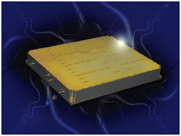Amplifiers
Power Amplifier Linearization Using an Indirect-learning-based Inverse TDNN Model
In this article, an effective digital predistortion procedure of data acquisition, analysis, modeling and linearization for high power amplifiers is presented, based on tapped delay neural networks (TDNN). Memory effects of high power RF amplifiers wer...
Read More

